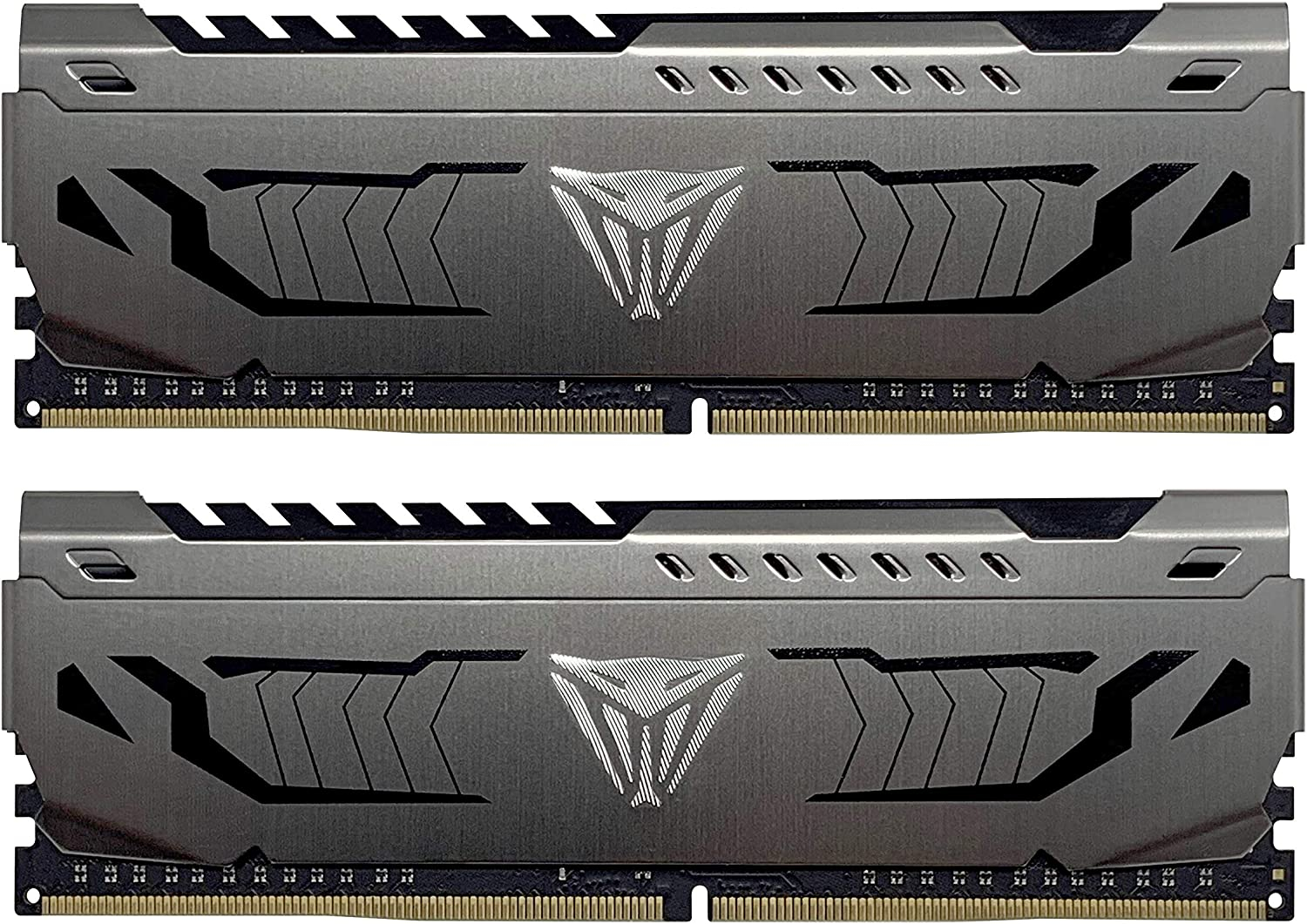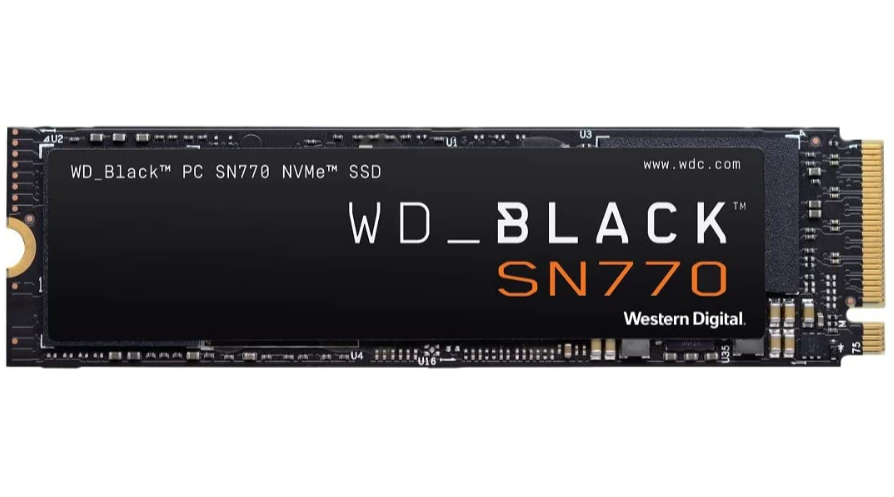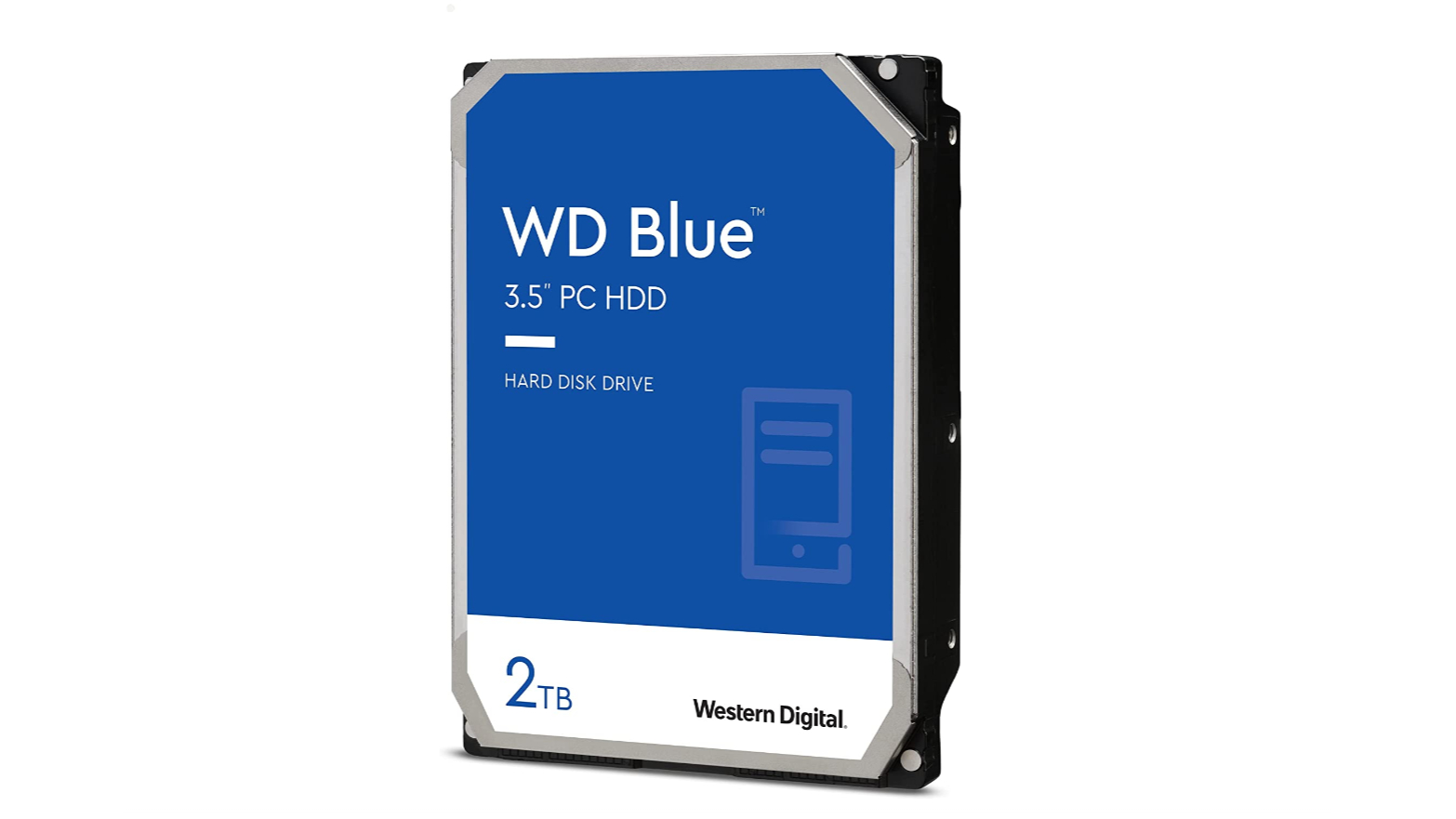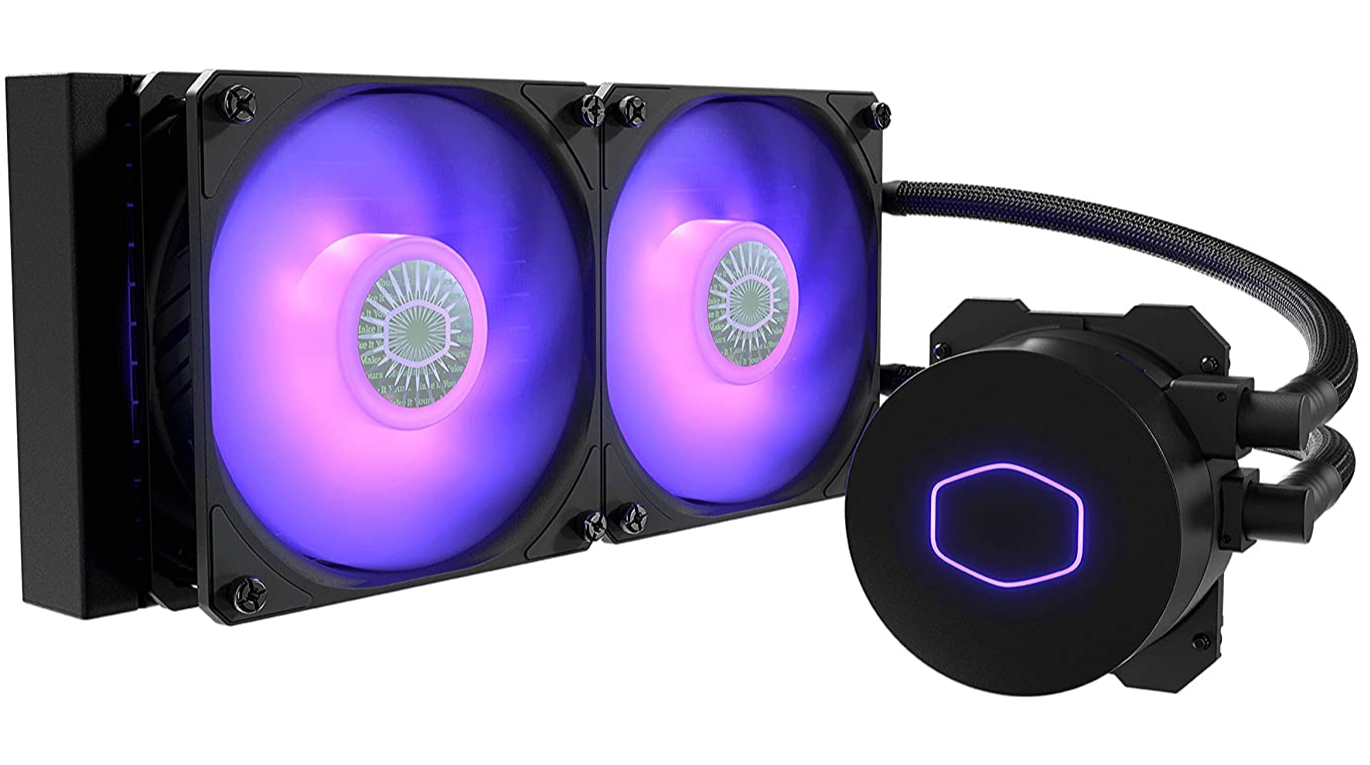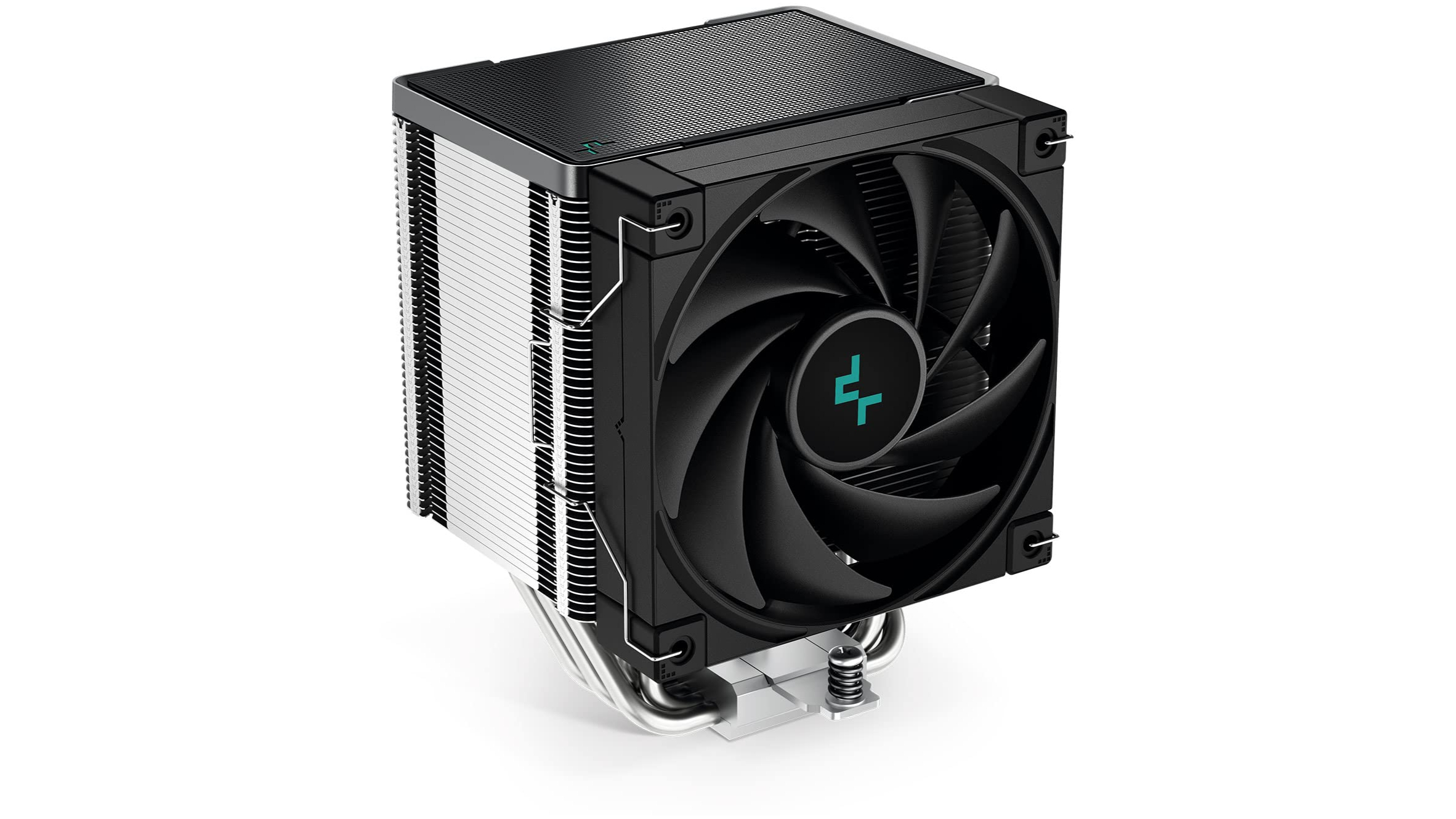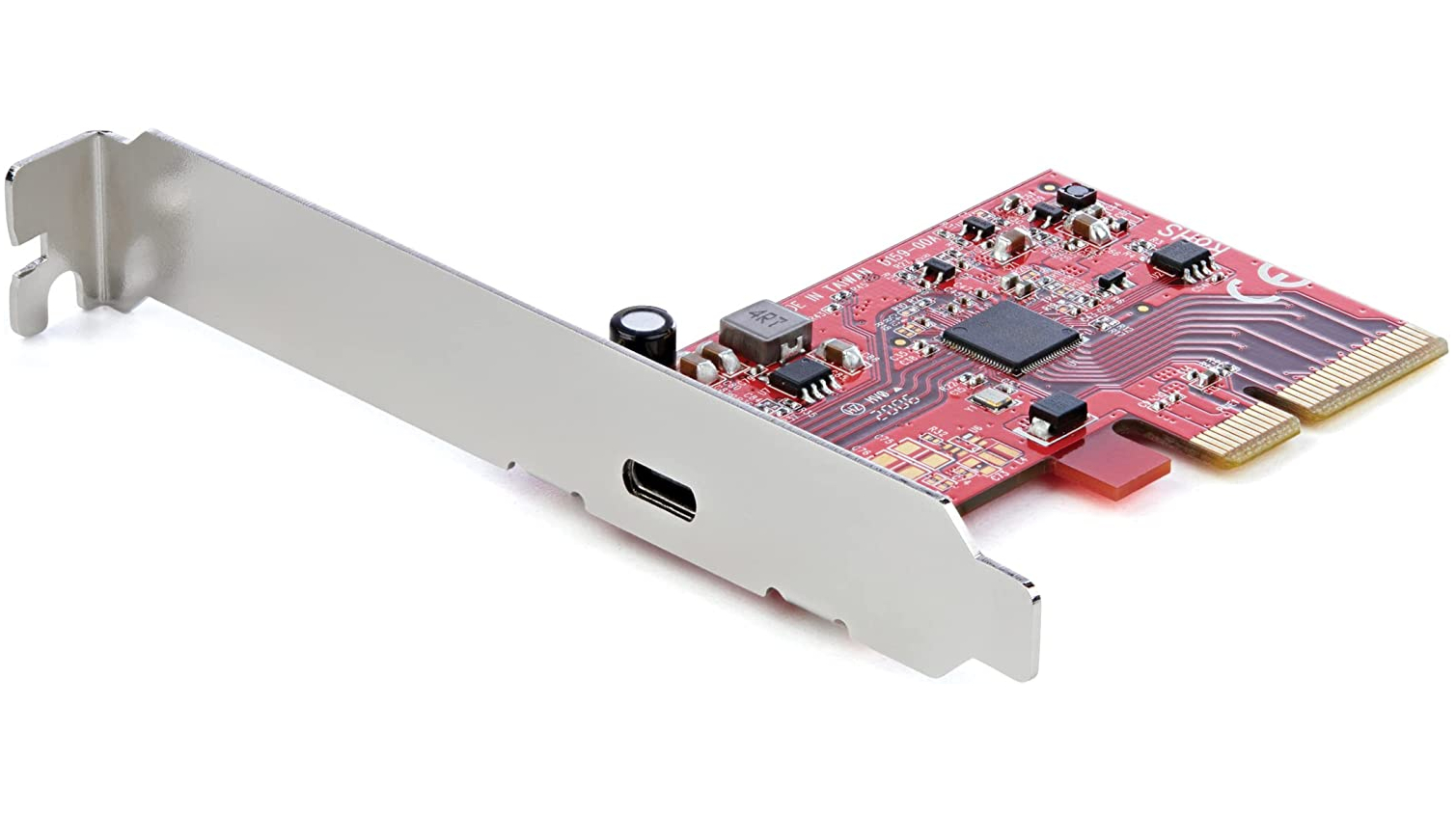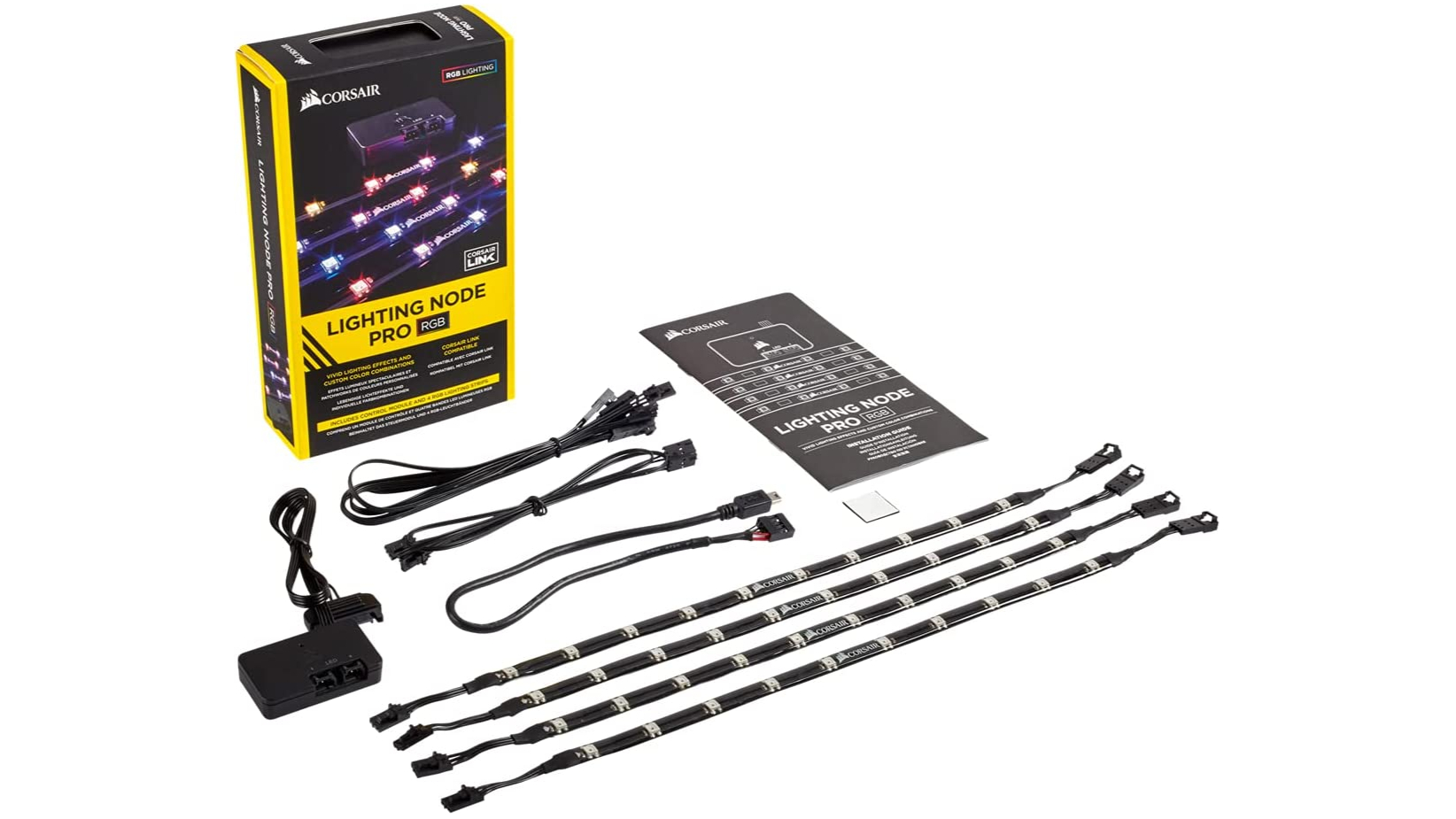10 Great PC Upgrades For Under $100: RAM, SSDs and More
Improve your computer’s performance and utility without spending a lot.

In these times of high inflation and economic uncertainty, not everyone has the budget to put together one of the best PC builds, even if it’s a budget rig with modes specs. If you’ve been dreaming of a new PC, but have to hang on to your existing hardware for a while longer, there are many ways to speed up your system or add helpful new functionality, without spending more than $100.
Obviously, in this price range, there’s no way to swap your GPU for one of the best graphics cards or replace your processor with one of the best CPUs. But, there is still a lot you can do. From RAM that improves your multitasking to storage drives to hold more data or games, and coolers that help push your current components to their limits, these are the best PC upgrades for under $100.
Note that, under each upgrade category, we suggest value-priced models we found when writing this article. We have not tested all of the individual models that are a good price right now, but any similar product from a reputable brand in these budget price bands should work.
1. Add More RAM
In 2022, no gaming or productivity PC should have less 16GB of RAM, and 32GB is preferable. Any less than 16GB and you risk running out of physical memory when you have more than just a few browser tabs open in Windows. With just two dozen Chrome tabs open, Slack and Spotify, we were using 14GB of RAM on the PC we wrote this.
When you run out of physical memory, your PC uses its virtual memory on its storage drive, which slows the whole system down. So upgrading from 8 to 16GB of RAM or 16 to 32GB could really speed things up.
If your system was built or sold in the last 5-7 years, it probably uses DDR4 memory, while older computers rely on DDR3 DIMMs. If you’re not sure, check your motherboard manual or use the Crucial Advisor to look up your computer / motherboard. If all of your computer’s DIMM slots are full, you’ll need to buy the exact amount of RAM you need. We maintain a list of the best RAM, but if you’re looking for a cheap upgrade, here are some really inexpensive kits to suit your needs.
DDR4 RAM
Get Tom's Hardware's best news and in-depth reviews, straight to your inbox.
Unless you’re trying to game on integrated AMD graphics, RAM with a speed of PC-3200 will be more than fast enough and, for some older and lower-end computers, might be faster than your system will officially support. Be sure to check your system or motherboard manual to see what’s supported, or the RAM you buy might run at slower fallback speeds.
- 16GB: TeamGroup’s T-Force Zeus Kit (2 x 8GB at 3200 MHz) - $45 at publish time.
- 32GB: Patriot Viper Steel DDR4 32GB (2 x 16GB) 3200 - $94 at publish time. This value-oriented kit performed well in our tests and even reached a maximum data rate of 3,734 when overclocked.
DDR3 RAM
As an old standard, DDR3 isn’t going to be the fastest, but if your computer requires it, you can certainly use the extra memory capacity you get from going to 16GB. On a system this old, it’s probably not worthwhile to go all the way up to 32GB.
- 16GB: Patriot 16GB(2x8GB) Viper III DDR3 1866MHz – $44 at publish time.
2. Upgrade Your SSD / Add an SSD
These days, you can grab a 1TB SSD for less than $80, though it won’t necessarily be the most performant drive at that price. If you’re willing to go into the $90- $100 range, you may find a drive that operates at much faster speeds, including some that use the high-bandwidth PCIe 4.0 interface (if your motherboard supports it). And, if your budget is tight and you don’t need a lot of space, a 500GB drive can be had for less than $50.
Before you choose an SSD, make sure you know what your computer can support. If you don’t know, you can always check your user manual or use the Crucial Advisor.
If you are planning to use your new SSD as a replacement for your boot drive, then speed is key. If your computer supports NVMe PCIe 4.0 SSDs, get one of those as they offer speeds up to 7,000 MBps. If not, and it supports PCIe 3.0 SSDs, go with that standard, which delivers around 3,000 MBps. Your last and slowest choice is SATA, which tops out around 550 MBps.
If you are planning to add a secondary drive, speed is less important than your cost per GB. However, if you are installing games onto the secondary drive, then getting a faster one is helpful.
PCIe 4.0 SSDs Under $100
- 1TB SSD: WD Black SN770 - $99 at publish time. In testing for our SN770 review, we found the drive hanging just below more expensive competitors like the Samsung 980 Pro. It promises sequential reads of more than 5,000 MBps.
- 500GB SSD: WD Black SN850 - $69 at publish time. Promising 7,000 MBps sequential reads, the SN850 is one of the fastest drives on the market. We tested the 1TB and 2TB capacity of the SN850 and found them to deliver strong transfer rates and game load times.
PCIe 3.0 SSDs Under $100
- 1TB SSD: Samsung 970 EVO Plus - $99 at publish time. Samsung is one of the leading SSD brands and, for many builders, only a Samsung will do. The 970 EVO Plus is the company’s flagship PCIe 3.0 drive, promising sequential reads of 3,500 MBps and writes of 2,300 MBps. On our tests, it loaded Final Fantasy XIV faster than most competitors and just a tad slower than a pricey Intel Optane 905P drive.
- 500GB SSD: Crucial P3 - $43 at publish time. If you really want to save money but still get solid performance, the P3 is a solid choice. This drive promises 3,500 MBps sequential reads with 1,900 MBps sequential writes. In our tests, the 2GB capacity actually outpaced the Samsung 970 EVO Plus on many tests, including PCMark 10. But you can expect the smaller 500GB model to be slower, particularly when it comes to sustained write speeds.
SATA SSDs Under $100
- 1TB: Crucial MX500 - $75 at publish time. The drive promises sequential speeds of up to 560 MBps reads and 510 MBps writes. When we tested the MX500 (way back in 2019), we found it was near the top of the pack in SATA performance, just a couple of notches below the Samsung 850 EVO.
- 500GB: Crucial MX500 - $46 at publish time. The 500GB version of the drive delivers mostly similar performance to its 1TB sibling.
3. Add a Hard Drive for Extra Storage
In this day and age, there’s no reason to use a hard drive as your boot drive. But if you need a lot of affordable storage space for data such as photos, videos and audio, adding a hard drive as a secondary drive makes sense. Performance isn’t as important for secondary storage, as the drive only needs to be fast enough to serve up your media or other files.
That said, a 7,200 rpm drive is a tad quicker than a 5,400 rpm drive so we’ve picked 7,200 rpm drives below. Here, as elsewhere, we want to go for reputable brands such as Western Digital, Seagate and Toshiba. Note that desktop hard drives come in 3.5-inch form factors, so make sure your case has a spare 3.5-inch bay, or opt for a 2.5-inch laptop drive instead.
- 2TB HDD: WD Blue 2TB - $49 at publish time.
- 6TB HDD: Seagate Exos 7E8 - $83 at publish time.
4. All-in-One Liquid Cooler
If your CPU uses the stock air cooler that came in the box with it, you could be missing out on both performance and silence. For well under $100, you can get an AIO (all-in-one) liquid cooler that does a far better job of moving heat away from your processor, usually at lower decibels. The cooler your CPU stays, the longer it can stay at its top turbo speeds.
AIO Coolers consist of a water block that sits on top of the CPU and absorbs the heat and transfers it to liquid coolant that circulates through closed tubes. A pump sends the heated liquid to a radiator that you mount on the case (probably on the top), where fans blow hot air out while the pump sends the now-cooled coolant back to the waterblock. The fans can be quieter than those on a stock CPU cooler, in part because they shouldn’t have to spin as fast. AIO Coolers tend to have 120, 240, or 360mm radiators, with the larger radiators offering better cooling.
Most of the best AIO coolers cost more than $100, unless they are on sale. But you can find some name-brand, 240mm AIO coolers with regular prices under $100.
- Cooler Master MasterLiquid ML240L V2 - $74 at publish time. We tested the original version of this 240mm cooler and found the performance really strong as it delivered lower temperatures than competitors. The V2 version should be similarly strong and, like the original, has RGB lighting.
5. Air Cooler
A high-quality air cooler can also bring your CPU’s temperatures down lower than the stock cooler that comes in the processor box. If you don’t want to spend more money or make room in your case for an AIO, a third-party air cooler is an easy alternative. Just make sure that it fits your CPU and isn’t too tall for your case.
- DeepCool AK500 - $54 at publish time. We tested and reviewed the DeepCool AK500 and found it to have low noise levels and the ability to cool even high-end CPUs.
6. Wi-Fi 6E Card
If you’ve upgraded your router to Wi-Fi 6 or 6E (you can also get a router for less than $100) but your desktop is still connecting via Wi-Fi 5, it’s time for an upgrade. Wi-Fi 6 is 2.5 times faster than Wi-Fi 5 and can deliver speeds up to 9.6 Gbps. You can grab a name-brand PCIe card that adds Wi-Fi 6 / 6E capability and Bluetooth for around $50. Cards from lesser-known brands can be had for less.
We recommend going with reputable brands such as TP-Link and Asus, although Intel makes many of the Wi-Fi cards in these devices. You can often check the card name in the technical specs section of a card’s product page. Also, make sure your system has a spare PCIe slot to install the card in, and that slot isn’t blocked by a big graphics card cooler.
- TP-Link WiFi 6E AXE5400 PCIe Card - $53 at publish time. This card has tri-band wireless, Bluetooth 5.2 and MU-MIMO.
- Asus WiFi 6E + Bluetooth 5.2 (PCE-AXE58BT) - $79 at publish time. This card has tri-band wireless, MU-MIMO and a large external antenna.
7. USB 3.2 Card
Though their version numbers have changed from USB 3.0 to USB 3.1 and now USB 3.2, all of these ports operate at the same top speed of 5 Gbps. But newer ports and devices can deliver 10 or even 20 Gbps and these are known as USB 3.1 or 3.2 Gen 2 and USB 3.2 Gen 2x2 respectively. The added speed is good for reading and writing to external SSDs, or connecting other high-bandwidth devices.
What do you do if your current computer doesn’t have a USB 3.2 Gen 2 or Gen 2 x 2 port, or maybe only has one? You can add these speedy ports with an inexpensive PCIe card. Even if you don’t see yourself ever using 10 Gbps or 20 Gbps devices, you can get a PCIe card that gives you more USB Type-A ports, too. Again, just make sure your motherboard has a spare slot that’s not blocked by your graphics card or something else in your case.
- USB 3.2 Gen 2x2 (20 Gbps): StarTech 1-Port USB 3.2 Gen 2x2 Card - $48 at publish time. If you just need one 20 Gbps port, this is the card for you.
- USB 3.1 Gen 2 (10 Gbps): Vantec 2-port USB 3.2 Gen 2 - $34 at publish time. This card provides one USB Type-A and one USB Type-C port, both of which can operate at up to 10 Gbps. There’s also an internal header to connect to ports on the front of your case.
- USB 3.0: Yeeliya USB 3.0 7-port card - $37 at publish time. If you just want a lot more 5 Gbps ports, this card features five Type-A ports and two Type-C ports, but none run at 10 or 20 Gbps.
8. Power Supply Extension Cables
The cables that came with your power supply are, at best, boring to look at and, at worst, a cable management nightmare because they aren’t long enough. You can’t replace them (even if they’re removable, you’d need ones specific to your PSU), but you can buy extension cables that come in attractive colors and make it easier to route the wires so that the ugly parts stay hidden. You can even get ATX and GPU extension cables with RGB lighting that makes your build really pop.
- ATX Cable (for motherboard): Lian Li Strimer Plus V2 - $69 at publish time. This 24-pin cable comes with a layer of addressable RGB lights on top of it and a controller box for the lights. When we reviewed the Strimer Plus V2, we noted its great flexibility and bright colors. I have one in my PC and was able to bend it close to 180 degrees so I could snake it neatly through a grommet in the case.
- PCIe Cable (for GPU): Lian Li Strimer Plus V2 8-pin cable - $49 at publish time. This is the dual 8-pin Strimer that you can use to power your graphics card. You can use it either by itself or with the ATX Strimer cable. Or you can buy both together for $103.
- Full set: AsiaHorse PSU Extension Cable Kit - $25 at publish time. This set lacks lighting but is available in a wide variety of colors to suit your taste.
9. Case Fans
As we’ve said before, a cooler computer is a faster computer. When your CPU and GPU get too hot, they slow themselves down in order to avoid physical damage. Even if you have one of the best CPU coolers and a graphics card with three fans, your case needs good airflow to make sure that all of the components operate at their fastest.
Unfortunately, many PC cases –particularly budget models– only come with oa single 120mm exhaust fan that spits warm air out of the back. Ideally, you’d at least have fans in the front, if not the top and possibly even on the bottom of your system, depending on your hardware and where your case has venting. Even if your PC case came with multiple fans, it may not have the fastest, quietest or best-looking fans available.
The good news is that you can get powerful, attractive case fans – most with built-in RGB lighting – for very affordable prices. A single 120mm fan goes for $15 to $25, but a set of three to five fans is a much better deal, with prices ranging from $17 (for really cheap fans), all the way up to $90.
Because they allow fine control over speed, we recommend getting PWM (aka 4-pin) fans if your motherboard has available 4-pin headers. As always, we recommend going with a name brand. If you’re already part of an RGB ecosystem and buying RGB fans, you may want to get ones that are compatible with the software you use to control your other RGB components. If your motherboard has 4 or 5-pin RGB connectors and so do your fans, then you can control them via the motherboard’s software.
- 3 pack of Lian Li Uni SL120 Fans - $79 at publish time. These fans snap together and are daisy-chainable so you can connect them together rather than running separate wires back to the included controller. I have a set of these in my case and I really love how the RGB light frames the fan, allowing multiple colors to show at once on both the back surface and the side of each fan.
- Noctua NF-P12 - $14 for a single fan at publish time. If you don’t like RGB but you do like quiet performance, this gray 1700 rpm fan promises to cut the noise while increasing the airflow. Our Managing Editor Matt Safford has been using a pair of these for years on his 240mm AIO and they have been constantly quiet and reliable.
- Antec 5-pack of PWM fans - $29 at publish time. This is a very good deal if you just want to outfit your entire PC with fans and don’t care about RGB. Each fan is capable of 1,600 rpm, so they have the ability to move a decent amount of air.
10. RGB Light Strips and Controller
You can have RGB case fans, an RGB cooler, RGB RAM and an RGB graphics card. But what if you just want to add a little more RGB that isn’t tied to a particular component? With RGB light strips and a controller box, you can bathe all of your components in vibrant colors. Just stick the strips at the top, bottom or sides of the case and use the controller box to set the color(s).
- Corsair iCue Lighting Node Pro - $58 at publishing time. This controller box comes with four LED strips and a controller box. As part of Corsair’s ecosystem, it’s controlled via iCue software.
- DeepCool RGB350 - $15 at publish time. This set is a bit low-tech but very inexpensive. You stick the two strips in the case, connect them to a small hub that draws power from a molex connector, and control the whole thing via a remote control, not software. It’s not the slickest setup, but you’ll be hard-pressed to find a case light setup for less money.
Avram Piltch is Managing Editor: Special Projects. When he's not playing with the latest gadgets at work or putting on VR helmets at trade shows, you'll find him rooting his phone, taking apart his PC, or coding plugins. With his technical knowledge and passion for testing, Avram developed many real-world benchmarks, including our laptop battery test.
-
hotaru251 ReplyImprove your computer’s performance and utility without spending a lot.
my issues with this is you have cable extensions which do not add utility nor do they improve performance.
they are purely cosmetic.
then RGB ? again neither makes ur pc perform better nor does it add utility.
and more ram is situational.
excluding speed more ram doesnt do anything unless you are using more than you have currently.
if u use 14gb in your most memory intensive application at peak...having more than 16 doesnt benefit you currently.
de-dusting your pc isnt on list (could of just merged aio/air cooler in 1 labled "3rd party cooler") and that can actually benefit you (as dust build up harms thermals)
also replacing thermal paste with a quality one or repasting if your pc is many yrs old as it could dry out. -
djsabor7 Isnt there T force ram at 3600hz at 32gb $94 right now?Reply
TEAMGROUP T-Force Vulcan Z DDR4 32GB Kit (2x16GB) 3600MHz (PC4-28800) CL18 Desktop Memory Module Ram TLZGD432G3600HC18JDC01 - Gray https://a.co/d/h7KVACx
And there's 3200 Hz at $84?
TEAMGROUP T-Force Vulcan Z DDR4 32GB Kit (2x16GB) 3200MHz (PC4-25600) CL16 Desktop Memory Module Ram (Gray) - TLZGD432G3200HC16FDC01 https://a.co/d/4WXrzgm -
rluker5 Here's another upgrade for less than $100:Reply
Delete Chrome and use Firefox or even Edge :p
Or save that $100 on other stuff and the next time you need to replace your chair that has gone flat, spend a little extra to get one with springs in the cushion. Best office chair I've ever had came with wrapped springs. Great for couches as well.
Edit: and an aio is a good idea if you plan on getting a new high end CPU. Those upcoming ones look like they will run hotter than current or past ones. -
Co BIY Moving from HDD to SSD is great and could allow you to tolerate many more years with your machine. (Second the MX500 recommendation)Reply
I would add mouse upgrade to the list (lower weight, better hand fit) and especially a mouse bungee. I thought the mouse bungee idea was dumb, it's not. It's brilliant. (I'm using a Glorious bungee)
I added a USB 3.0 card to the rear of my ancient PC and attached a 3ft cable to give me easy access for transfers. -
evdjj3j Replyhotaru251 said:my issues with this is you have cable extensions which do not add utility nor do they improve performance.
they are purely cosmetic.
then RGB ? again neither makes ur pc perform better nor does it add utility.
and more ram is situational.
excluding speed more ram doesnt do anything unless you are using more than you have currently.
if u use 14gb in your most memory intensive application at peak...having more than 16 doesnt benefit you currently.
de-dusting your pc isnt on list (could of just merged aio/air cooler in 1 labled "3rd party cooler") and that can actually benefit you (as dust build up harms thermals)
also replacing thermal paste with a quality one or repasting if your pc is many yrs old as it could dry out.
You need to realize this is another zero effort article that has become a mainstay of Tom's in he last few years. -
Krotow Replyhotaru251 said:my issues with this is you have cable extensions which do not add utility nor do they improve performance.
they are purely cosmetic.
then RGB ? again neither makes ur pc perform better nor does it add utility.
and more ram is situational.
excluding speed more ram doesnt do anything unless you are using more than you have currently.
if u use 14gb in your most memory intensive application at peak...having more than 16 doesnt benefit you currently.
de-dusting your pc isnt on list (could of just merged aio/air cooler in 1 labled "3rd party cooler") and that can actually benefit you (as dust build up harms thermals)
also replacing thermal paste with a quality one or repasting if your pc is many yrs old as it could dry out.
Visuals inside PC case together with RGB are pure gimmick. Though taste differs, somebody may prefer otherwise :) More RGB indeed will not help to pump up performance except when you are forced to purchase RGB enabled components. Because better performing RAM, GPU and motherboard at today are hard to get without any kind of forced RGB.
De-dusting still cost something. Either the price of compressed air can, dedicated blower or compressor. Blowing with mouth will not help much - proven in practice countless times.
USB 3.2 expansion board for 8+ years old is dubious choice. USB drives on these computer can't work even in max USB 3.0 speed. -
salgado18 Reply
If you use 14GB at your peak usage, then getting 32GB is still a good idea, because the OS might already have made some room in memory. Get too close to the limit, and you don't actually know if you already reached it or not.hotaru251 said:my issues with this is you have cable extensions which do not add utility nor do they improve performance.
they are purely cosmetic.
then RGB ? again neither makes ur pc perform better nor does it add utility.
and more ram is situational.
excluding speed more ram doesnt do anything unless you are using more than you have currently.
if u use 14gb in your most memory intensive application at peak...having more than 16 doesnt benefit you currently.
de-dusting your pc isnt on list (could of just merged aio/air cooler in 1 labled "3rd party cooler") and that can actually benefit you (as dust build up harms thermals)
also replacing thermal paste with a quality one or repasting if your pc is many yrs old as it could dry out.
Yeah, the AIO and air coolers are the same, like RAM and SSD.
I think the SSD may outlive most systems, so purchasing a PCIe 3.0 today if you can get a 4.0 is a waste of money. Get the best you can afford, drives are backward compatible, and soon every motherboard will have PCIe 4.0 M.2 slots. So, when you upgrade the motherboard, the SSD is still relevant. Get SATA drives only for notebooks without M.2 ports, or you really want to maximize size over speed.
I second the thermalpaste, it's a great maintenance trick for older pcs.
And de-dusting is a good idea, a compressed air can is pretty cheap too. -
hotaru251 Reply
"under $100"Krotow said:De-dusting still cost something
never said cost nothing. just it was under the cost of the topic.
you can track realtime RAM usage.salgado18 said:If you use 14GB at your peak usage, then getting 32GB is still a good idea, because the OS might already have made some room in memory. Get too close to the limit, and you don't actually know if you already reached it or not.
unless you legit use up what you got there is no benefit to increasing amount.
system uses what it can and thats what matters.
if u never use the full 16 gb in system than a 16 gb kit at same speed/timings as a 32gb will not give any performance benefit because thats how it works. any extra doesnt benefit system.
eli5 version:
why buy a 100 gallon tank if you only have 45 gallons of fluid? save $ and buy a 50 gallon tank.
